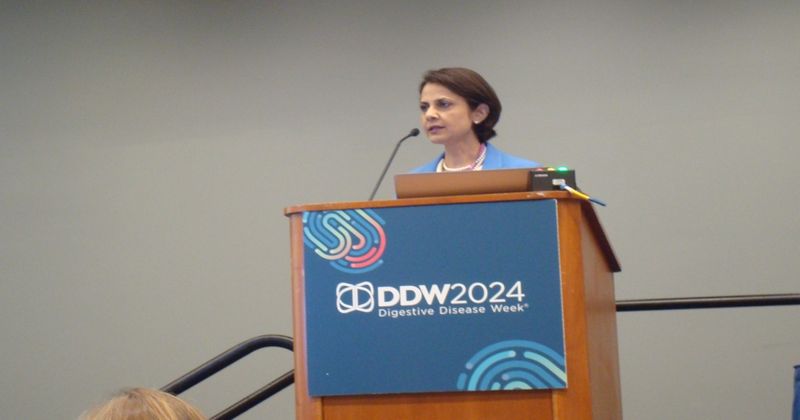‘Encouraging’ data: GLP-1RAs linked to lower risk for cirrhosis in MASLD, type 2 diabetes
Key takeaways:
- The 3-year cumulative incidence of cirrhosis was 2.5% among GLP-1RA users vs. 8% among non-users.
- The absolute risk reduction for cirrhosis was 5.5% at 3 years.
WASHINGTON — Glucagon-like peptide-1 receptor agonists were associated with lower risk for progression to cirrhosis and hepatocellular carcinoma in patients with metabolic dysfunction-associated steatotic liver disease and type 2 diabetes.
“Metabolic dysfunction-associated steatotic liver disease, or MASLD, is a growing cause of cirrhosis and HCC,” Fasiha Kanwal, MD, MSHS, professor and section chief of gastroenterology at Baylor College of Medicine, said at Digestive Disease Week. “GLP-1 receptor agonists are effective in reducing weight, improving glycemic control and reversing chronic liver inflammation in MASLD. However, whether they reduce the risk of progression to cirrhosis and HCC — clinically important outcomes in patients with MASLD — remains unclear.”

She continued: “In the absence of clinical trial evidence, observational studies can help fill the gap in our knowledge about chemoprevention for cirrhosis and for HCC.”
In a retrospective cohort study, Kanwal and colleagues enrolled 20,383 adult patients (mean age, 60.1 years; 87.85% men) with concomitant MASLD and type 2 diabetes who received liraglutide (13%), semaglutide (70%) or both agents (17%) at 129 hospitals in the U.S. Veterans Affairs health care system. They were matched with 140,628 non-user controls (mean age, 59.56 years; 86.6% men).
The primary outcome was the time from the date of first prescription to cirrhosis or HCC. Researchers also conducted a secondary analysis on the risk for HCC among 3,338 GLP-1RA users and 23,111 non-users who had preexisting cirrhosis at baseline.
According to study results, the 3-year cumulative incidence of cirrhosis was 2.5% among GLP-1RA users vs. 8% among non-users (adjusted HR = 0.3; 95% CI, 0.27-0.33), and the incidence of HCC was 0.04% vs. 0.14% (aHR = 0.3; 95% CI, 0.13-0.7), respectively. The absolute risk reduction for cirrhosis was 5.5%, or 55 in 1,000 at 3 years, and 0.1% for HCC, or 1 in 1,000.
Results from the secondary analysis demonstrated a 3-year cumulative incidence of HCC of 1% for GLP-1RA users vs. 1.3% for non-users (aHR = 0.77; 95% CI, 0.48-1.23) with cirrhosis at baseline.
“The use of GLP-1 receptor agonists was associated with a lower risk of progression to cirrhosis and HCC,” Kanwal told attendees. “However, for HCC, the absolute risk reduction was small in general, and nonsignificant for patients with existing cirrhosis. These results are encouraging but they do support the need for long-term randomized clinical trials to truly test the benefits of GLP-1 receptor agonists for preventing cirrhosis in patients with MASLD and diabetes.”

